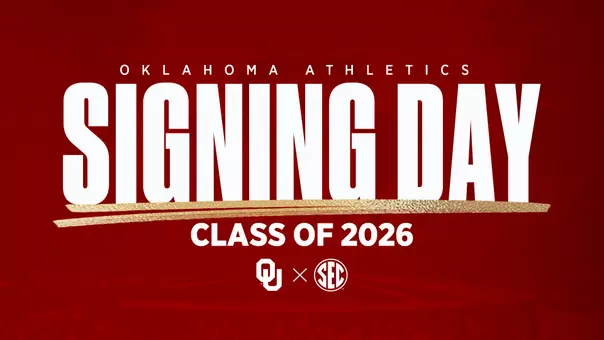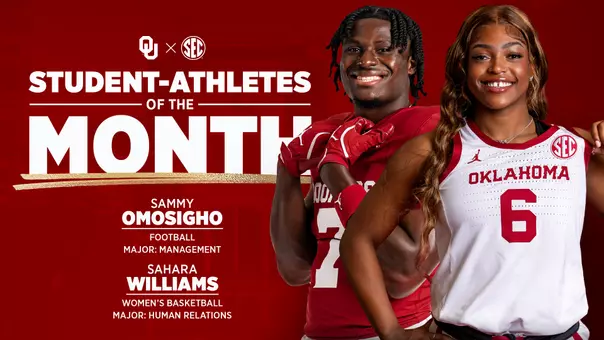University of Oklahoma Athletics
Mossman Prophecies No. 026
July 02, 2007 | Athletics
July 2, 2007
Heard another talking head last week spouting how college
athletes should be paid. Of course, what the gentlemen
really meant was that college football players and
perhaps men's basketball players should receive compensation
based on the lucrative bowl, NCAA Tournament and television
packages.
When pundits call for college athletes to be paid,
most of them have no regard for the tennis player,
the soccer player or the track and field athlete. No,
they're talking about dollars for those student-athletes
that just happen to play revenue-generating sports.
Talk about a recipe for anarchy. Talk about illegal.
Title IX legislation was put in place to create equal
opportunities for all student-athletes. Mostly, it
balanced the playing field for women.
What that measure
does not address is the business end of college athletics,
the pluses and minuses. OU Athletics, like many of
its peers around the country, receives no direct state
tax support. The athletics department is self-sufficient.
And, OU, like most athletics programs on the I-A level,
has only two sports that generate positive revenue
- football and men's basketball. Note that both of
the revenue producers are men's sports. Does that mean
only male athletes would be paid in a move to pay athletes?
No, you can be certain that if pay-for-play was ever
imposed, it would be implemented across the board for
all student-athletes and all would receive precisely
the same pay check. Federal law would guarantee as
much.
So let's just say you do pay all of them. How much?
One hundred dollars per month? $500 per month? $1,000
per month? Even the latter of those is less than what
a graduate assistant makes. So let's use $1,000 per
month for our example.
Spread that over 20 sports at OU (Stanford, with its
31 sports, must be cringing about now) with 400 student-athletes
and that's $400,000 per month. Over a nine-month
school year, that's $3.6 million.
Even at Oklahoma, such a thing would require serious
adjustment and the impact would be dramatic.
For most of the Division I-A schools, whose balance
sheets look a lot different than the one in Norman;
paying student-athletes would be downright back-breaking.
It would mean fewer academic services and fewer overall
programs for those same student-athletes.
It would also mean less for fans in terms of the staff
that work to meet their needs.
But the questions don't stop there. Would this be BCS
only? Wouldn't an athlete at a school with many television
and bowl appearances deserve more of the money than
an athlete at a less-successful, less visible school?
And if that was permitted, wouldn't it impact recruiting
in an interesting way? Should a walk-on get a piece
of the pie or is it performance-based?
See the endless stream of ethical and economical questions
that are born out of such a suggestion?
The thing that has always been devalued by pay-for-play
proponents is the college scholarship. I have a son
in college now. I can tell you that I would dearly
love to have him on a full-ride. It would account for
a significant amount of money.
It's time for us to stop treating college scholarships
like a throw-in. They're not. They have great value.
Another thing that is ignored is the enormous commitment
that has been made by athletics programs to upgrade
training facilities, academic assistance facilities
and the staffs that inhabit both.
One national commentator pointed to graduation rates,
most of which are figured with a misleading formula
that fails to account for transfers, early professional
departures, etc., and said that universities are not
taking the money they earn and funneling it into the
educational process for student-athletes. How utterly
false.
Today's student-athlete has more academic and training
opportunity than any predecessor, and that's to say
nothing of the travel and other amenities that are
top rate. All of that is due in very large part to
the money that college sports has generated.
OU Athletics, like most of its competitors, employs
an army of advisors and tutors and dedicates more than
30,000 square feet to its athletics academic assistance
unit. Any student-athlete that fails to graduate does
so as a result of personal choices. The system, right
down to a stringent class attendance policy, to facilitate
academic success is there for the taking, and it's
state of the art.
Eight out of every 10 OU student-athletes that complete
their eligibility also graduate, so don't tell me that
the educational part of this process is being ignored.
As an aside, did you know that less than 60% of the
general student populace at OU actually graduates?
Athletics graduation rates seem alarming when any context is
left unprinted.
You will see a rate at 50% or lower on occasion for
student-athletes (forgetting to tell you that transfers
and early pro departures were counted as non-graduates)
and everyone will gasp. Would they gasp in the same
way if they saw that such a rate is consistent with
the general student body?
The argument for paying college student-athletes is
often misinformed. As the debate continues, just keep
this in mind ... all student-athletes would have to
be paid under such a plan and the majority of Division
I programs would struggle mightily to survive as anything
close to what they are today.
Cite the Oklahoma's of the world as an example if you
must, but realize that most college programs don't
live on that street.
I love the student-athletes and want them to get what
they can within reason, but college sports, with all their
warts, still belong to the amateur. Has that notion
been tarnished over time? You bet. A lot.
But if we ever give up on that idea altogether
I honestly don't think many of us will like the new
landscape or the tremendous divide such a move would
further create between athletics and the campus at-large.
Mossman Prophecies Archive
- - - - - - - - - - - - -
- - - - - - - - - - - - - - - - - - - - - - - - - -
- - - - - - - - - - - -
Kenny Mossman, Associate Athletics Director for
Communications, provides his perspective on Oklahoma
Athletics in his regular column on SoonerSports.com.












